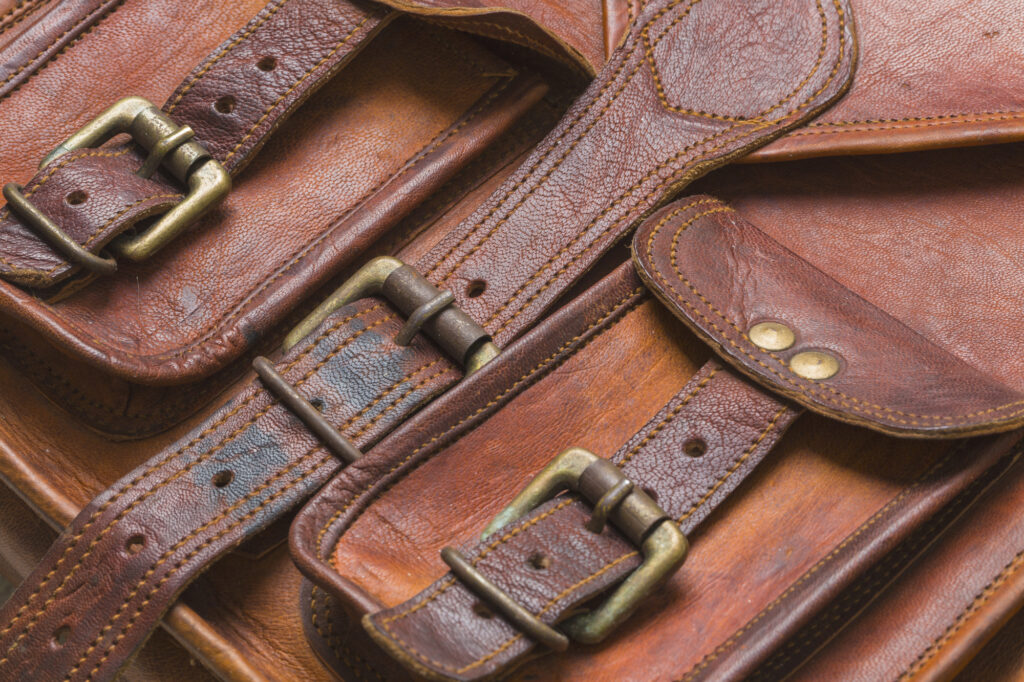Leather is a material that has been used for centuries to create a variety of goods, from clothing and accessories to furniture and home decor. While cowhide leather is a popular choice, buffalo leather has been gaining popularity in recent years.
Here Is Why Buffalo Leather Is Better Than Cowhide
Buffalo leather offers several advantages over cowhide leather, making it a better choice for those who are looking for a high-quality, durable material. This includes:
Buffalo is more rare than cowhide
The leather itself is a lot thicker
Buffalo leather is more expensive to purchase
Tougher & Heavier
In this blog post, we will explore the reasons why buffalo leather is a superior choice and why it might be the right choice for your next leather purchase. From its durability and strength to its unique texture and appearance, we’ll dive into the various benefits of buffalo leather and why it’s worth considering as a high-quality leather option.

Reasons Why Buffalo Leather Is Better Than Cowhide
Buffalo Leather Is More Rare
Buffalo leather is generally considered more rare than cowhide leather for several reasons. First, buffaloes are not raised or used for their leather as extensively as cows, making buffalo leather a less common material.
Additionally, buffaloes have thicker hides than cows, which means that producing leather from a buffalo hide requires more skill and effort. This also makes buffalo leather a more premium and sought-after material, as it is more difficult to produce and has unique properties that distinguish it from other types of leather.
Finally, buffaloes are typically found in specific regions of the world, such as India and Africa, which means that buffalo leather may be more difficult to obtain in some parts of the world compared to cowhide leather. All of these factors contribute to the relative rarity of buffalo leather, making it a more exclusive and valuable material than cowhide leather.
Three Times As Thick
Compared to cowhide leather, buffalo leather is generally considered to be three times as thick. This is due to the fact that buffaloes have a thicker skin compared to cows, which translates into thicker and stronger hides that are well-suited for leather production. The thickness of buffalo leather provides several advantages over cowhide leather, including increased durability and resistance to wear and tear.
Because buffalo leather is thicker, it is also able to withstand more stress and tension without tearing or cracking. This makes buffalo leather an ideal material for products that are intended to last a long time, such as furniture, bags, and other accessories.
However, the thickness of buffalo leather also means that it may be more difficult to work with than cowhide leather, and may require specialized tools and techniques to cut, stitch, and shape into the desired product. Nonetheless, the added thickness and strength of buffalo leather make it a popular choice for those who are looking for a premium, long-lasting material.
Buffalo Leather Is More Expensive
Buffalo leather is generally more expensive than cowhide leather to purchase for several reasons. First, buffaloes have thicker hides than cows, which means that producing leather from a buffalo hide requires more time, effort, and skill. This translates into a higher cost of production, which is then passed on to the consumer.
Additionally, buffaloes are not raised or used for their leather as extensively as cows, which makes buffalo leather a less common material. This relative rarity contributes to the higher cost of buffalo leather, as it is a more exclusive and valuable material compared to cowhide leather.
Finally, the unique properties of buffalo leather, such as its thickness, strength, and unique texture, make it a sought-after material for high-quality leather products. This added demand for buffalo leather also contributes to its higher price compared to cowhide leather.
Tougher
Buffalo leather is generally considered tougher and more durable than cowhide leather when used in garments and shoes. This is due to the fact that buffalo leather is more durable than cowhide leather, which makes it more resistant to wear and tear. The added thickness of buffalo leather also provides better protection against abrasions, cuts, and punctures, making it an ideal material for shoes and garments that are intended to withstand heavy use.
Furthermore, buffalo leather is also more resistant to water, which is another important factor in making it a good choice for footwear. It is able to repel water more effectively than cowhide leather, which helps to protect the shoes or boots from getting damaged when exposed to wet conditions.
Additionally, the unique texture of buffalo leather provides a distinctive appearance that is highly valued in leather goods. The texture of buffalo leather is characterized by a pattern of tiny bumps and wrinkles, which gives it a rugged and natural appearance. This texture can add to the visual appeal of the garment or shoe and also makes it more resistant to scratches and scuffs.
Overall, the toughness of buffalo leather makes it a popular choice for garments and shoes that are intended for heavy use, such as work boots, motorcycle jackets, and other types of outdoor apparel. The added durability of buffalo leather ensures that these products will last for a long time and provide good protection and comfort for the wearer.
Heavier
Compared to cowhide leather, buffalo leather is generally heavier due to the thickness and density of the material. Buffalo leather is made from the hides of buffaloes, which have a thicker skin compared to cows. This means that the hides used to produce buffalo leather are thicker and heavier than those used for cowhide leather.
The added thickness and weight of buffalo leather provides several advantages over cowhide leather, including increased durability and resistance to wear and tear. The heavier weight also gives buffalo leather a more substantial feel, which is often perceived as a sign of quality and durability in leather products.
